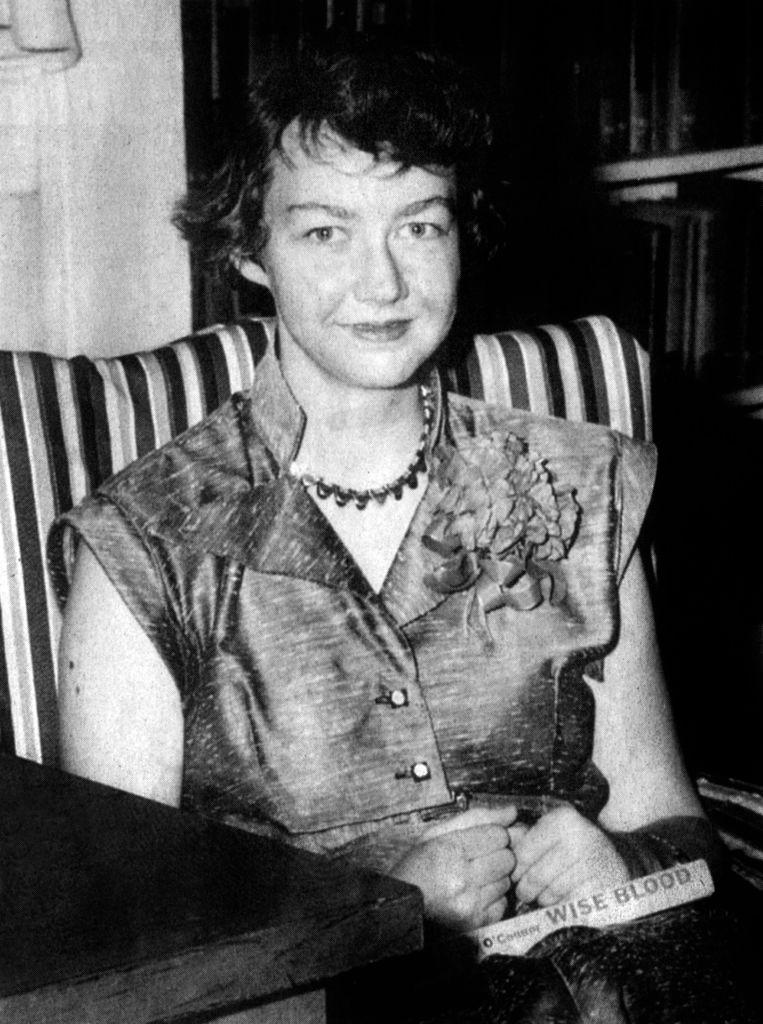Flannery O’Connor, a towering figure in American literature, crafted stories that are deeply rooted in the harsh and often unsettling realities of the American South. Born in 1925 in Savannah, Georgia, O’Connor’s life was as compelling as the characters she created, imbued with themes of morality, suffering, and redemption.
Early Fascinations: Chickens and Peacocks
Even from a young age, Flannery showed a unique fondness for birds – a peculiar passion that would later color her persona and work. As a child in Georgia, she reportedly taught a chicken to walk backwards, a feat that brought her minor local fame and a penchant for watching the seemingly mundane with a philosophical lens.
O’Connor’s fascination with the animal kingdom extended to peacocks, which she raised at her family home. These majestic birds became a recurring motif in her life and work, representing the dual nature of beauty and brutality, mirroring the complex interplay of grace and grotesque that she often depicted in her narratives.
A Life of Illness and Inspiration
Tragically, like her father, Flannery was diagnosed with lupus, a condition that significantly shaped her life and work. This illness required her to return to her mother’s home in Milledgeville, Georgia, where she continued to write despite debilitating symptoms.
Her faith, captured in her rich explorations of Catholicism’s darker aspects, provided a framework through which she interrogated the human condition. O’Connor’s writing evokes a theological depth, even as it challenges readers with its raw depictions of human eccentricity and fallibility.
Romantic Interludes and Literary Legacy
Flannery’s personal life was marked by romantic disappointments, yet these experiences enriched her storytelling. Through her letters and diaries, readers discover her candid reflections on love and longing, adding layers to her public persona and the characters she created with such authority. Her relationships with men, notably with well-known literary figures, though often fleeting, were profound, each leaving an indelible mark on her narrative voice.
Posthumous Recognition and Controversy
O’Connor passed away at the young age of 39, yet her influence has whitewashed the landscape of Southern Gothic literature. Over the years, her personal correspondences, journals, and posthumous publications have cemented her as a literary icon. O’Connor’s estate – her family farm, now a museum – and her image gracing a postage stamp stand as testaments to her enduring legacy.
However, recent years have also invited criticism and reevaluation of her views on race, as contained in some of her personal letters. These critiques reflect ongoing discussions around race and representation in her work, challenging her admirers to reconcile her artistry with her personal beliefs.
In schools and literary circles, Flannery O’Connor continues to be a subject of academic inquiry and admiration. Her works, taught alongside those of other great Southern writers, like Faulkner, invite readers to explore the paradoxes of human existence through a uniquely O’Connor lens – one that is as scrutinizing as it is enlightening.
